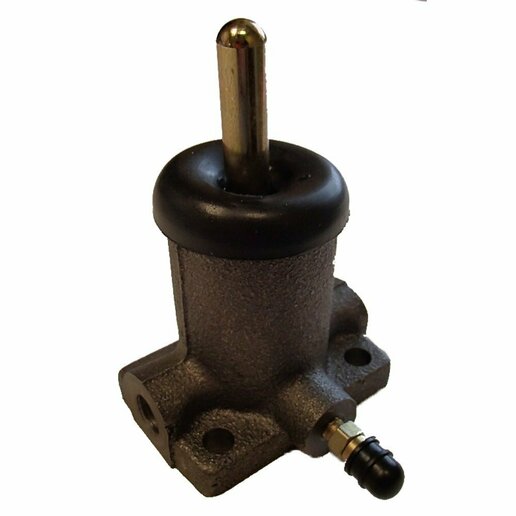I have an old (1973) 850 Case bulldozer. The "wheel" cylinders for the brakes push levers that mechanically clamp the twin brake discs. The "wheel" cylinder is a single bore with a flat bottom held in place with two 1/4" bolts. A double-ended rod engages the piston in the cylinder and an adjusting bolt on the lever.
This design is used on many Case models of tractors, backhoes, and crawlers.
My problem is that my cylinders (part number A 50557) were originally 1-1/8" bore, and all the replacement cylinders have 7/8" bore. One of my cylinders was junk, and I replaced it with a new unit. That side takes twice the pedal effort to turn the dozer!
I cannot find any information on bore size of Case slave cylinders. Everyone gives the mounting dimensions and rod length, but not bore.
My remaining cylinder has "BENDIX 2226169" cast into it. I cannot find anything using this number, but a couple of listings cross to early Case 580E cylinders part numbers A62483 and A168473. Does anyone know what the bore size is on these cylinders?
This design is used on many Case models of tractors, backhoes, and crawlers.
My problem is that my cylinders (part number A 50557) were originally 1-1/8" bore, and all the replacement cylinders have 7/8" bore. One of my cylinders was junk, and I replaced it with a new unit. That side takes twice the pedal effort to turn the dozer!
I cannot find any information on bore size of Case slave cylinders. Everyone gives the mounting dimensions and rod length, but not bore.
My remaining cylinder has "BENDIX 2226169" cast into it. I cannot find anything using this number, but a couple of listings cross to early Case 580E cylinders part numbers A62483 and A168473. Does anyone know what the bore size is on these cylinders?


